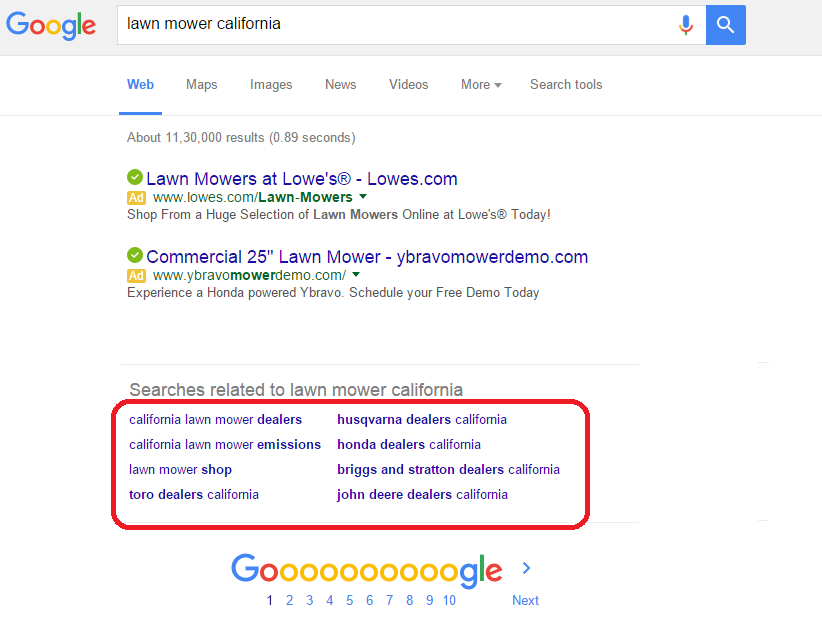Having a good website is the primary key to creating an indelible brand presence online. However, what many web developers don’t factor in, is the optimization of the website to attract visitors on the search engines or develop the right keyword strategy. Thus, when a business gets a website ready, it has a scintillating brand identity ready. But sadly, their customers don’t even know they exist! Simply because the business owner didn’t factor in the criticality of proper search engine optimization (SEO) techniques to be implemented in parallel to website development, or as a post-launch exercise.
When you decide to carry out a content plan for planned SEO strategy, you will hear a myriad of suggestions from your search engine optimization (SEO) partners. One of the most common initial tactics spelt out by them will be the need to get your keywords right to put gears on your content plan. They will encourage a mix of high volume and long tail of organic searches and subsequent web traffic that visits your website through Google Search.
The idea here is – there are thousands (if not millions) of competitor websites vying for the attention of the same target customer. You need to give a solid reason to this customer, as to why they should feel compelled to visit your site, rather than your competitor site. The answer will be at two levels:
- They need to know that you exist as a business entity
- They need to know that you will provide enough information that will help them solve their problems or needs
With help of content management, your SEO people will try to add value at the both levels i.e. with the right keyword, your customers will be able to discover you, and with an engrossing content, they will be compelled to subscribe or purchase.
How Keywords Provide the Necessary Edge?
Let’s take the example of a lawn mower company that wants to sell its product online. Now, in the context of the above two levels of business engagement, let’s see what they would do to attract web traffic and gain conversion.
- They need to know that you exist as a business entity
For this query, the company needs to figuratively step into the buyer’s shoes. They need to determine different personas or psychographics of their target buyers and then see what they might type in their search query. Typical examples of search queries for the lawn mower supplier would be “How to mow gardens”, “Steps to clean lawn mower”, “benefits of lawn mowing on property value”.
You see what is happening here? The company is not blatantly doing a direct selling of its products in its content management. Instead, they will seek to provide informative content and blogs to answer their customers’ queries, with the aim to elicit conversion. However, this will need some serious keyword research, so that it reaches the right audience (and not someone who isn’t interested in lawn mowing at all).
- They need to know that you will provide enough information that will help them solve their problems or needs
Once you have decided the keywords to use, you will incorporate these meaningfully into an information-rich content. When you write on topics such as the ones mentioned above and the right kind of visitors read this topic, it will be a win-win situation. They will gain trust, be happy that you were able to resolve their concerns, and generally be more likely to check out your website for different products to purchase them.
This is how the right keyword helps convert casual visitors to highly engaged sales prospects. Now that you know the power of keywords, let’s take a look at how you can devise the right keyword strategies that help in organic searches.
Steps to Getting Your Keyword Strategy Right
1. List down topics that are meaningful, relevant, and revolve around your business offering
To take the same example of our lawn mower client, we need to think of 5-8 topic buckets that we need to concentrate on. Check out what the competitor blogs about most frequently. Check out if it ties up well to your product offering. In our case, some topic buckets will be
- “power lawn mower”,
- “lawn mower parts”,
- “lawn mower engine”,
- “lawn mower California” (if you want to encourage local web traffic), or
- “lawn mower online”
2. Populate these topic buckets with keywords
Now is the time to fill up the void of your topic bucket with keywords. Go full steam on this, as this is just the preliminary activity and more refinement will happen in the next steps. So if I take a bucket topic – ‘power lawn mower’, I can get some keyword around it
- “Right engine for your power lawn mower”,
- “Steps to clean power lawn mower”,
- “Benefits of power lawn mowing”
- “Power lawn mower troubleshooting tips”
- “Best power lawn mowers”
As said, this is just a ‘thinking out aloud’ part of listing out and not your final keyword list.
We can completely understand that you might not always have ready information in this phase. Two elements can help you out here:
a) Check with your marketing and sales team on what are the most common questions they get from their prospects or customers. Chances are that your online audience might type in the same words in their search strings too
b) Set up Google analytics software with your site. On the website traffic sources section, you can explore the organic search traffic bucket and see how the site visitors have come to your site in past
3. Widen your scope with related terms
When you do a google search, remember the additional recommendations that the search engine provided at the bottom of the page? Well, this can be your additional terms or multiple word keywords.
Ok, so we were looking at the search engine recommendations of related terms. This is your second place to go after pouring out your obvious business experience. Want more terms? Then another handy tip for you. Simply type in the related terms and then see what recommendation pop-up for those related terms!
Now you have a good bunch of topic buckets and keywords that you can further fine-tune for success.
4. Get your head terms and long tail keywords clear
For each topic bucket set your head tail (one or two word term) and your long tail keywords (bunch of words that form a phrase).The head tail is the short/common one-two word query that is short, common, popular and straightforward. There will be a lot of traffic that you will get but the RoI will be very low because of the intense competition. This combining of a bunch of 3 or more words into phrases is known as long tail keywords.
To take a small example ‘lawn mower’ would be a very high competition keyword (a head tail), but someone querying ‘Honda push lawn mower California’ will be more focused and is more intent on getting this product. So while the traffic volume will be low, but the RoI on long tail keywords will be much higher.
Confused on whether to use head tail keywords or long tail keywords? Our take – use a combination of both!
While head tail keywords will give you short term gains, long tail keywords can help with long term wins. While head tail keywords give you some web traffic, long tail keywords can give you conversions.
5. Competitor Analysis
Knowing what your competitor is ranking for in keywords is critical at three levels –
- If you are at a loss for finalizing keywords list, this can be a great avenue to add to your list
- If your list has the same keywords as competition, it means you are on the right track and can further fine tune it for success
- If competition is not ranking on some keywords in your list, it means this is an untapped market that you need to break into
Use tools like SEMRush to assess what keywords your competition is ranking for.
6. Utilize Google AdWords Keyword Planner
Now you have a clear visibility of what keywords you have with you, it is time to go weeding out the non-RoI friendly ones and give priority to the RoI friendly keywords. You can do this with the help of Google AdWord Keyword Planner and Google Trends. With the Keyword Planner, you can remove any outlier with too much or too little search volume. It is worth spending some time on the lower search volume to check for their trend in past and future projections, to ensure you aren’t eliminating any valuable long tail keyword.
That’s it!
Your keyword strategy is now complete. As against PPC campaigns where traffic comes via internet advertising, getting your keywords right can help drive organic search traffic for free. This way you get amazing RoI for your overall digital marketing campaign.
















![Export Website To CSV A Practical Guide for Developers and Data Teams [2025 Edition]](https://www.promptcloud.com/wp-content/uploads/2025/10/Export-Website-To-CSV-A-Practical-Guide-for-Developers-and-Data-Teams-2025-Edition.webp)



